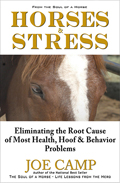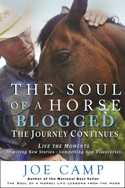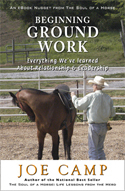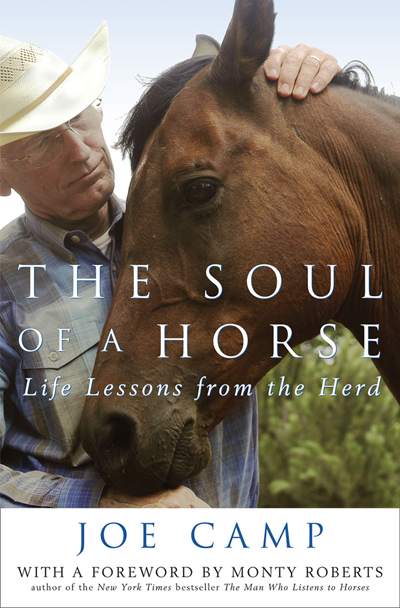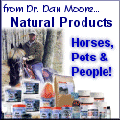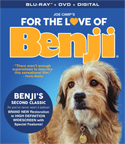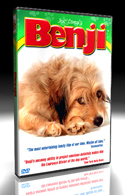The subject of equine diet and nutrition is a very slippery slope, as anyone who has tried to make sense out of it can testify. This page is crammed full of everything we’ve learned about diet, nutrition, sugars, fats, soy, and supplements including exactly how we feed our seven wonderful beasties. Updated regularly. Worth a bookmark.
We continue to learn every day about how we can ensure that our horses are getting, or have access to, the kind of options they would have available to them in the wild, which is the foundation of their genetic structure – and our approach to everything equine – to ensure that our horses have access to what they need, and, at least to some extent, can also pick and choose what they feel they need based upon their individual conditions. As is highlighted throughout our books and this site, for us, it’s not about what we humans think, or what is most convenient for us. It’s about how we can replicate as closely as possible the health and happiness our horses would have if they were in the wild taking care of themselves. Below I’ll cover how we were feeding in our dry high desert home in southern California, then how we made the transition to middle Tennessee. But first, for those who would rather cut straightaway to exactly what were are doing today, I’ll do just that. But there’s value in reading through the history and understanding how we arrived at “today,” which is giant steps closer to my goal of seeing our horses live happily and healthily into their thirties and forties.
At this writing, we have initiated a brand new diet for our herd. No more soy. No more GMO. No more grains which turn to sugar, no more unbalanced Omega 6s (Inflammation creators!!), and no more artificial (chemical) preservatives.
Just when you think you’ve got it all exactly right someone comes along and says Not so fast young man.
And, as luck would have it, this was someone we trusted.
As many of you know, Triple Crown Safe Starch was the foundation for whatever supplements we feed our horses for many years. The product is a grass forage (orchard and timothy) that is guaranteed to be less than 10% NSC (non-structured carbs – sugar!). So it made sense to us back when we discovered the product because grass or grass hay is what horses should be nibbling most waking hours of their day. Grass forage has to be better than pellets, right? But our friend, Dr. Mark DePaolo, a terrific holistic vet, sauntered by and essentially said: Not if there is soy in the forage.
“Soy?” said I. “Why would there be soy in a forage? And is soy really bad for horses?”
Here is Dr DePaolo’s response:
“Why is there soy in horse feed? At this time, soy is the cheapest form of protein available. So, cost is the reason. But soy is highly estrogenic and should never be fed to either sex of horses, especially those that are already suffering from any type of metabolic disorder like Hypothyroidism, Insulin Resistance or Cushing’s Syndrome.
99.9% percent of soy included in human and horse food is genetically modified to be Round-Up Ready. Glyphosate, one of the active ingredients (in Round Up), is the leading cause of leaky gut syndrome in horses. Leaky gut syndrome can cause food allergies, diarrhea, mal-absorption syndrome, colic and irritable bowel syndrome.
Phytates in soy are also undesirable. They will bind to certain nutritional minerals in a horse’s diet and prevent them from being absorbed into the body. It is very common for a horse that is being fed soy to be lacking Iron, Manganese, Chromium, Cobalt and sometimes Selenium when tested utilizing Horse Hair Analysis. These minerals are very important in the production of proteinaceous connective tissues such as tendon, ligament, joint cartilage, hoof and hair coat.
Nutritional Minerals are also hugely significant portions of a healthy immune system, without them horses are more prone to damage from foreign invaders and pathogens that can cause Lyme disease, EPM, respiratory tract infections, etc. For your horse to be as healthy as possible you should be vigilant in eliminating any and all forms of soy from the feed and supplements that you give.”
It turns out that there is soy oil in Safe Starch and soy meal in the supplement that is added to Safe Starch to make the product a “complete feed”. We haven’t been feeding very much of it per day (approximately a half-pound), just enough to provide a base for our other supplements, but Dr. DePaolo convinced me that all soy should be avoided.
So we switched to Triple Crown Premium Chopped Grass Forage (also guaranteed to be less than 10% NSC) which neither contains soy oil nor any supplements, meaning no soy meal. And no wheat middlings, another item Dr. DePaolo is not fond of because of its glycemic rating (sugar).
To the forage, we add Omega Fields’ Omega Horseshine, one-half cup to 2 cups per day depending upon the horse and the moment. At this writing one is receiving 2 cups per day, three horses are receiving 1 cup per day, the rest one-half cup per day. This is the singular best Omega 3 supplement on the market as far as I’m concerned. It has an unbelievably low NSC rating of 4.4 (a measure of Non-structural carbs, which turn to sugar immediately upon entering the horse’s body). And Horseshine is the only major brand Omega 3 supplement on the market that is 99.9% pure Non-GMO stabilized ground fortified flax. That’s .9% higher than required for human food grade. Nobody else does this. This is very best stabilized ground flax that money can buy, using proprietary flax stabilizing technology that preserves the nutritional value of the Omega 3s. Every domestic horse on the planet needs Omega 3 supplementation because no one, horse or human, can manufacture their own Omega 3s. A horse in the wild will get his Omega 3 needs from the many varied kinds of fresh native grasses that have never been exposed to chemical fertilizers, pesticides, herbicides, and never been GMO’d. Domestic pastures virtually always come up short because usually they have been exposed to one or all of the above. And hay loses its Omega 3s when it’s cut and dried, so the horse (and the human) need Omega 3 supplementation. If you are currently supplementing Omega 3 using another product, I encourage you to read the label. I have for every major Omega 3 product out there. You will find no other brand using such a high quality flax. Many don’t even use pure flax, opting for a less expensive and less effective flax by-product like flax meal. And virtually every other Omega 3 product will contain some sort of sugar or molasses, and/or grains that are high in non-structural carbs that turn into sugar immediately once inside your horse and are loaded with unbalanced Omega 6s which create inflammation in your horse (corn and corn by products, wheat and wheat by products, barley, etc), and/or partially or totally hydrogenated vegetable oils (which create inflammation inside your horse). And there’s no soy (see above) or artificial (chemical) preservatives.
Omega Fields seriously cares about all health concerns of your horse and has addressed them in Omega Horseshine. As you can tell, I am truly excited to find these people! And to learn that Omega 3s are absolutely essential to our horses. They fight inflammation, they support and build the immune system, improve bone and joint health, restore cracked and brittle hooves and support strong solid hoof growth, can eliminate sweet itch and bug-bite sores, and promote shiny, healthy coats and smoother skin texture, and more! Stormy looks like she has been shellacked. Seriously. I think it’s the shiniest winter coat I’ve ever seen.
Oh, and there’s no need to worry about over-doing Omega 3s. Neither you nor your horse can get too many Omega 3s (unless you’re on a blood-thinning medication, in which case stick closely to recommended dosages). To get 10% off use the promo code joecamp when you go to this link: Omega Horseshine
And the treat we use and train with is, exclusively, Omega Fields’ Omega Nibblers – Low Sugar and Starch treats. The one treat on the planet that is actually good for your horse. Read more about this amazing find. To get 10% off on these treats and/or on anything purchased from Omega Fields on their website use any of these links.
If it sounds like I have become a spokesperson for this company I have recently agreed to do just that. Because I’ve been blown away by Omega Fields and their products. It’s the first company I’ve ever met whose standards are as high or higher than my own. Thus, the first time I have ever agreed to do such a thing.
Omega Horseshine and the following minerals are now the only supplements we use.
All the horses get Bloomin Minerals, some in their feed and some from free-feeding. In my opinion these are the best complete essential minerals for horses and a really inexpensive way to get all 71 of nature’s essential minerals, in nature’s balance, working in the bodies of your beloved animals, boosting their immune systems and helping them to make themselves healthy. To prime the pump so to speak, we wet down 1/3 cup of the minerals and stir them into their morning chopped forage. Once dispersed the minerals stick to the chopped forage and are eaten with no issues. And that causes them to look to the free-choice bucket if their bodies say we need more. The nice thing about plant derived colloidal minerals is there’s no such thing as overdosing. The body takes what it needs and disposes of the rest. Click here to read more about Bloomin Minerals.
We still are feeding California Trace which is basically a supplement emphasizing copper, zinc, and selenium, very important minerals to the thyroid, pituitary gland and other organs. Our soils are virtually void of those three. In fact the soils in most of our country are badly depleted of those three minerals. Skeeter was able to eliminate his pharmaceutical thyroid medicine altogether once he was getting California Trace.
Dr. Dan’s Red Cal is our free choice salt and trace mineral mix.
We also use Diatomaceous Earth (DE), again stirred into the chopped forage, for parasite prevention (see our post No More Poison – Life Without De-Wormers).
We add in a half-cup of alfalfa pellets, basically just for the “crunch” and that’s it.
There you have it. As you know, our herd is out 24/7, so they have free-choice grass and/or Bermuda hay (quantity dependent upon the time of year) around the clock. Very important! In fact, one of the most important things your can do for your horse. This is a must because, in the wild, horses are moving and eating 12-18 hours a day. Their tiny tummies (comparatively speaking) need to be eating little bits of grass or grass hay pretty much all the time. Horses are genetically programmed to eat grass forage (real grass or grass hay), little bits at a time, up to 18-20 hours a day. Unlike the human’s, the horse’s stomach is programmed to release digestive acid around the clock. When grass forage is not dribbling in on a regular basis the acid has nothing to work on but the insides of the horse itself! The acid is in the stomach, where it can reach the upper squamous region that has no protective mucus lining, which is where most ulcers form. Human digestive acid turns on and off depending upon whether food is present. The horse’s digestive acid never stops. So the grass forage needs to be there. Free-choice. Around the clock. Our guys and gals have just celebrated their seventh anniversary out on pasture 24/7 in middle Tennessee, where legend has nicknamed our new homeland Founder Valley. Done right, it isn’t. You can read about all that in the post or the book Horses Were Born to be on Grass. Suffice to say they are all happy, healthy, and without issue.
And… for those who just want a list without all the related thoughts and stories, here ‘tis:
Triple Crown Premium Chopped Grass Forage
Omega Fields’ Omega Horseshine
Save 10% by clicking this link
and using the coupon code JOECAMP10 at checkout
Youngevity Bloomin Minerals – free choice
Dr. Dan’s Red Cal – free choice
And, again, the treat we use and train with is, exclusively, Omega Fields’ Omega Nibblers – Low Sugar and Starch treats. As I mentioned above, the one treat on the planet that is actually good for your horse because everything in it is good for your horse. Especially the Omega 3s from 99.9% pure Non-GMO stabilized fortified flax. And there is no bad stuff in it. No Molasses, no corn or other grains that are high in non-structural carbs that turn to sugar when metabolized, no soy, no hydrogenated fats or oils, no chemical preservatives, no flax by-products like flax meal, and no wheat middlings. Save 10% by clicking this link and using the coupon code JOECAMP10 at checkout
Read More
Download Flyer
Save 10% by clicking this link
and using the coupon code JOECAMP10 at checkout
Send a copy of your Omega Nibblers email purchase confirmation to
nancy@thesoulofahorse.com
and receive a free PDF copy of Training with Treats!
The above is the way we feed now.
The below is how we got there:
When we first got into horses in southern California, almost ten years ago, on a piece of land with no grass whatsoever, I researched, searched, dug, and asked whyyyy for months before ultimately coming up with the following:
1. We fed free-choice grass hay around the clock (again, grass was non-existent).
Again, this is a must. Free-choice. Around the clock (see above).
Further to that point, Dr. Juliet Getty, Equine Nutritionist, points out, “The cecum in a horse has its entrance and exit at the top. For digested material to exit at the top, it must defy gravity. The organ must be able to contract to push the contents out the top. To do this forage needs to be flowing through the digestive system at all times. Otherwise, sand, dirt, and undigested material can remain at the bottom of the cecum, leading to colic.”
The problem is that even the best farm-grown, grass hay, although necessary, will not usually give your horse all the choices he needs to get the Omega 3s, vitamins, minerals, and nutrients he can acquire on his own in the wild, because it’s only one kind of hay. In the wild the horse eats multiple kinds of grasses and myriad brambles, trees, bushes, etc. And in the wild, what he’s eating has not been fertilized to beat the band and grown and regrown on the same soil each year. We fed three different types of grass hay (alfalfa is not a grass hay) every day, to at least give the horses a few choices (see: Horses Need Choices, Take this Stress Test, and Why the Wild Horse Model?) and to attempt to get much closer to the mixture horses have access to in the wild, but many can’t afford the time, effort, and cost of doing that so they resort to supplements to attempt to fill in the gaps.
2. Fed a “condiment-sized” serving of alfalfa
Lisa Ross-Williams says think of alfalfa as a condiment, like salt, pepper, hot sauce, or salad dressing. Just a taste, for the variety, protein, and different nutrients. Only a taste because alfalfa is way higher in calcium and magnesium (high magnesium levels increase the chances of the formation of enteroliths – intestinal stones) than your horse needs and the calcium/phosphorous ratio is way out of whack. It’s even worse in the southwest quadrant of the United States because of the high alkalinity of the soil. I have a stone the size of a cantaloupe that Dr. Matt removed from a horse who was being fed 100% alfalfa. It’s a terrific reminder to keep alfalfa in small portions. In California, our boys and girls got a total of three small flakes a day divided among five or six horses, scattered in maybe ten small piles, morning and evening, so everybody was assured of getting their fair share. Here in middle Tennessee their very natural pasture contains at least five different grasses plus weeds, brambles, trees, clover, dandelions, etc. etc. and they receive no alfalfa at all, except occasionally as a treat.
3. We were also told to feed a half scoop of Strategy for each horse, morning and evening. We did for a while… but not anymore.
This was the vet’s way of adding nutrients, minerals, and vitamins to the diet, but ultimately, as I dug deeper, it became apparent that this was not the best way because I have found that virtually all pelleted “total feeds” (then) had things in them that horses would never have in the wild and shouldn’t have (based upon all the reading I’ve done) in their domestic feed. Every natural “expert” I’ve read agrees that a horse’s total sugar intake (NSC, which means non-structured carbohydrate) should be 10% or less of his entire intake. Hay or feed that is higher than 10% sugar is setting your horse up for all sorts of potential problems. Oats and corn, once in the body, are very much like eating pure sugar. And molasses is pure sugar. Just Google “NSC Horse Feeds” and you’ll find plenty to read on the subject. And we discussed soy and GMO above. Here’s a list I found of the NSC levels in various Purina Feeds:
Omolene 100 – 40.5%
Omolene 200 – 40.3%
Omolene 300 – 38%
Strategy – 26%
Junior – 23%
Adult – 20%
Senior – 22%
Race Ready – 35%
Ultium – 16%
Horse Chow 100 – 16%
Horse Chow 200 – 18%
Complete Advantage – 24%
WellSolve L/S – 11%
WellSolve W/C – 15%
Enrich 12 – 10%
Enrich 32 – 10%
Note:
Triple Crown Lite NSC is 10%
Triple Crown Safe Starch Forage (which is what we used then) is guaranteed to be less than 10%.
Triple Crown Premium Chopped grass Forage (what we use now) is less than 10%.
All grain is exceedingly high in glycemic index. Here are a few:
Corn – 117
Oats – 100
Wheat 71
Carrots 51
100 glycemic index is the percentage at which sugar gets into your blood compared to pure glucose. In other words, oats put sugar into your horse’s blood at 100% the rate of pure glucose.
Whereas Bermuda grass hay has a glycemic index of 23, and rice bran 22. These are low. I’ve tried for years to find a “rule of thumb” calculator for conversion of Glycemic Index to NSC, and vice versa. But have never found such an animal. Because whereas both measurements relate to sugar content, they measure different things. I do know that Bermuda hay is “generally” in the 7% to 9% range NSC. It can be lower or higher depending upon when it’s cut, where it’s grown, etc, etc, etc. But generally speaking, if the Bermuda NSC to Glycemic index relationship holds that would mean that oats have an NSC of approximately 45%. Wow! Generally speaking Bermuda, a warm season grass, is much lower in NSC than cool season grasses like Orchard, Timothy, or Fescue (see Horses Were Born to Be On Grass and Horses Without Grass and The Soul of a Horse Blogged – The Journey Continues). Where horses get into trouble with sugars in grasses is usually when there is only one kind of cool-season grass available, usually highly fertilized, and no other choices (other grasses, especially warm season grasses, plus weeds, berries, brambles, trees, etc). Given lots of choices horses will balance themselves.
No Processed Fats
Then there is the issue of processed fats, which in a bag of feed must be heat-processed to keep the fats from going rancid… BUT the processing, heat processing and hydrogenation, mutates the fat causing all sorts of free radicals (inflammation) in the body, in effect “rusting” our horse’s veins as Dr. Dan, the natural horse vet puts it. Those same mutated fats “rust” our veins as well, which is why neither our horses nor ourselves should eat processed fats. Fats, themselves, are not bad. In fact they’re good. It’s what the manufacturer does to them to “stabilize” them that is bad for our health. Kathleen and I stick to cold-pressed extra virgin olive oil, coconut oil, peanut oil and butter. At low temperatures.
So, when I finally decided it was time to bite the bullet, to start digging into nutrition, there we were, with our horses quite used to getting a treat every morning (the molasses/grain based Strategy at 26% NSC) in order to intake some of the vitamins/minerals/nutrients not found in their farm-grown hay. These vitamins/minerals/nutrients are all available as supplements, but how were we to get these supplements down the horses without something to mix them with so they will wind up willingly going down the gullets of our horses… without a bunch of NSCs and processed fats going down as well. This was my problem, and my search, for quite some time. Grains won’t work. Too much sugar. And every processed feed I’ve found is either based heavily on grains, or has heat processed fats, or molasses, or all of the above.
That’s what led to Safe Starch and ultimately to Triple Crown Premium Chopped Grass Forage.
Grass Forage it’s not a pellet, and has no grains or molasses, and is guaranteed to be under the safe recommended 10% NSC (sugar). It’s a “chopped forage” in a bag. We call it chopped salad. At first I was put off… too bulky… weird looking… and… well, not a pellet. But I finally opened the bag and tried it. A full scoop, loose, not packed, weighs only 13+ ounces.
We transitioned completely from Strategy pellets, and all of our horses made happy plates, leaving nothing in their tubs. Yippee!
Here’s the way we were feeding before we moved from southern California to middle Tennessee:

Morning:
For everyone except Skeeter, Mouse, and Noelle a full scoop of chopped forage. I started with 1/2 scoop, lightly spray a mist of water on the chopped salad, put in all the supplements, then stir.
Plus a “condiment-sized” serving of alfalfa… and free-choice Bermuda around the clock with a flake or two of orchard thrown in, scattered all the way around our entire 1.5 acre pasture in 90-100 different piles. The way we determine free-choice quantity is: when they leave some, we put out a little less. When they make happy plates, we put out a little more. The reason for the 90-100 piles is to keep them moving around the clock, just as they would in the wild. Playing musical hay piles :).
In season, they all got one or two tangerines and a few twigs and leaves from our two tangerine trees.
Often they got a few pine branches, maybe once a month. And an occasional dried tumble weed in season. They also like dandelions… sometimes, which is good in the Springtime as they grow everywhere!
Evening:
The same as morning.
In addition,we kept Dr. Dan’s Red Cal free choice salt and mineral in a granular form hanging on a fence: http://www.naturalhorsevet.net
Now, in Tennessee, it’s hanging in the barn. Horses cannot get enough of what they need from blocks. Their tongues do not have the “sand papper” quality of cows. Dr. Dan’s is not affected by rain. Just pour off the water and the remainder in the bucket is as good as ever.
The video below is how our horses were living in southern California:
See our Paddock Paradise Video:
After the move to middle Tennessee:

We fed morning and evening. The rest of the time the horses were out 24/7 munching 5-6 species of native pasture grasses, brambles, weeds, thistles, tree bark… and in the winter, Bermuda grass hay. Supplements were given during the morning feed. The evening feed is basically a way of assuring that we and the horses spend time together at least twice a day.
Our emphasis, both in lifestyle and diet, was all about keeping the horses’ immune systems working at their peak. There is no more important thing you can do for your horse. If he has a great immune system, as he would have in the wild, he will be able to take care of virtually any issue that comes along. Prevention is the best treatment (see Why the Wild Horse Model? and Horses Need Choices).
Yes, we were probably overdoing the supplements a bit but at this moment we’d rather be erring on the side of strong immune systems than weak ones.
For our current feeding plan go back to the top.
We’re on 31 steep hillside acres, about 2/3 of it pasture. Feeding Bermuda hay during winter, and still a bit during the summer, scattered across the pasture way up the hill and/or way away from the water pond (for diversity – Bermuda is a warm season grass, very low in sugar to balance Orchard and Fescue which are cool season grasses that run much higher in sugar – and to encourage movement, movement, movement). Our guys have never seen this much grass before the move from California. We did eliminate the Omega 3 they were getting out west as they receive plenty from the pasture grasses and plants.
During December, January, February, and March, we are feeding four (Tennessee) bales of Bermuda a day, half in the morning and half in the evening, again as in California, scattered all around the pasture to force movement. A Tennessee bale weighs about half as much as a California bale but costs about 1/3 less by weight, so it’s easier to handle and saves money :)
See our Anniversary blog post for our results. We just passed as this is written the seventh year anniversary of being out 24/7 in what we were warned was known as “Founder Valley” (See Horses Need Choices).
Check out the blog or newsletter and check back here to keep up with changes and why. I prefer the blog and the content is the same on both. Blog subscribers receive an email notification of each post with a link. Newsletter subscribers usually receive a newsletter format email but only with the first few paragraphs plus a “read more” link to the blog post.
One other note. Emerging research regarding fat in a horse’s diet is paralleling the studies for humans with similar results. Fat is necessary for both of us… but only if it’s unrefined, not heat processed, un-hydrogenated fat. It’s the processing that manufacturers do to “preserve” the fat that is killing us and our horses, the chemically mutated fat. Heard a good phrase recently: Eat sugar and burn sugar, store fat (in other words: get fat.) Eat fat and burn fat. There are good articles on this subject and on the need for antioxidants, and why, at Dr. Dan’s The Natural Horse Vet website:
http://www.naturalhorsevet.net
Stay tuned.
Read More About Horses, Benji, Goals in Life: joecamp.info
———
Read More
Download Flyer
Save 10% by clicking this link
and using the coupon code JOECAMP10 at checkout
Send a copy of your Omega Nibblers email purchase confirmation to
nancy@thesoulofahorse.com
and receive a free PDF copy of Training with Treats!
—–
Read About The Best Omega 3s Money Can Buy For Your Horse
Download Omega Horseshine Flyer
Save 10% by clicking this link
and using the coupon code JOECAMP10 at checkout
Related Links:
Video: Why Our Horses Eat from Ground Level
Video: The Soul of a Horse Paddock Paradise
What We Did, How We Did It, & Why?
Dr. Juliet Getty’s Book
Feed Your Horse Like a Horse
Hear our Diet-Nutrition Tele-Workshop
Featuring Eddie Drabek, Scott Berry, Mark Taylor, Joe, Kathleen and Special Guest
Dr. Juliet Getty, Author of Feed Your Horse Like a Horse
Click here
——
The entire story of our journey with horses (at least through early 2014) is told in the two books that follow: the national best seller The Soul of a Horse – Life Lessons from the Herd and its sequel Born Wild – The Journey Continues.
And what a story it is as two novices without a clue stumble and bumble their way through the learning process so that hopefully you won’t have to. If you haven’t read both of these books already please do because with that reading, I believe, will come not just the knowledge of discovery but the passion and the excitement to cause you to commit to your journey with horses, to do for the horse without waiver so that your relationship and experience will be with loving, happy and healthy horses who are willing partners and who never stop trying for you. Horses like ours.
Read the National Best Seller that started it all
Now in it’s 17th printing:
National Bestseller
#1 Amazon Best Seller
#1 Amazon “Hot New Releases”
At Bookstores Everywhere
Amazon & Kindle
Barnes & Noble
Order Personally Inscribed Copies of The Soul of a Horse
Order Both The Soul of a Horse & Born Wild – Save 20%
Both Personally Inscribed
Please list the names for each inscription in the “instructions to Seller” field as you check out!
Read More About The Soul of a Horse
Watch The Soul of a Horse Trailer
The highly acclaimed best selling sequel to the National Best Seller
The Journey Continues
#1 Amazon Best Seller
#1 Amazon “Hot New Releases”
Amazon & Kindle
B&N
Order Personally Inscribed Copies of Born Wild
Order Both The Soul of a Horse & Born Wild – Save 20%
Both Personally Inscribed
Please list the names for each inscription in the “instructions to Seller” field as you check out!
Read More About Born Wild
Read More About The Soul of a Horse
Watch The Soul of a Horse Trailer
Watch the Born Wild Trailer
“Joe Camp is a master storyteller.” – The New York Times
“One cannot help but be touched by Camp’s love and sympathy for animals and by his eloquence on the subject.” – Michael Korda, The Washington Post
“Joe Camp is a natural when it comes to understanding how animals tick and a genius at telling us their story. His books are must-reads for those who love animals of any species.” – Monty Roberts – Author of New York Timers Best-seller The Man Who Listens to Horses
“Camp’s tightly-written, simply-designed and powerfully drawn chapters often read like short stories that flow from the heart.” Jack L. Kennedy – The Joplin Independent
“Joe Camp is a gifted storyteller and the results are magical. Joe entertains, educates and empowers, baring his own soul while articulating keystone principles of a modern revolution in horsemanship.” – Rick Lamb – TV/Radio host – The Horse Show
Click any book cover below to read more or purchase
Follow our journey with two amazing new arrivals from the wild. Kathleen’s terrific photos are worth the click.
In chronological order:
What an Extraordinary Weekend!
Firestorm’s Amazing First Day in the Playpen
No-Agenda Time – So Much Value!
An Amazing Birthday Gift from a Wild Mustang!
Saffron and Firestorm – Progress and Photos – Lots of Both!
Two Mustangs – Three Mind-Boggling Months!
For more current posts go to the blog homepage and scroll down
Follow Our Entire Journey
From no horses and no clue to stumbling through mistakes, fear, fascination and frustration on a collision course with the ultimate discovery that something was very wrong in the world of horses.
Read the National Best Seller
The Soul of a Horse
Life Lessons from the Herd
Read More About Horses, Benji, Goals in Life: joecamp.info
The Soul of a Horse Page on Facebook
The Soul of a Horse Channel on Vimeo



